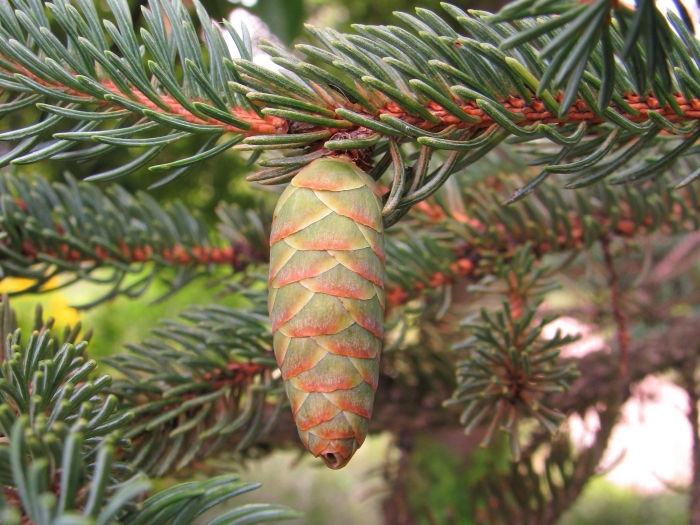White Spruce
(Picea glauca)
White Spruce (Picea glauca)
/
/

Agnieszka Kwiecień, Nova
CC BY-SA 4.0











































































Estimated Native Range
Summary
White Spruce is valued for its uniform shape and is often used for windbreaks, privacy screens, and as a Christmas tree. It is also planted for reforestation and urban greening due to its tolerance of urban pollution. In cultivation, it thrives in full sun but can tolerate partial shade. It is adaptable to various soil conditions, including clay, loam, or sandy soils, with a preference for well-drained sites. While it requires medium amounts of water, it can also tolerate some drought once established. Gardeners should be aware of potential issues such as spruce beetle infestations and needle cast diseases.CC BY-SA 4.0
Plant Description
- Plant Type: Tree
- Height: 60-80 feet
- Width: 10-20 feet
- Growth Rate: Slow
- Flower Color: N/A
- Flowering Season: Non-Flowering
- Leaf Retention: Evergreen
Growth Requirements
- Sun: Full Sun
- Water: Medium
- Drainage: Fast, Medium, Slow
Common Uses
Bank Stabilization, Bee Garden, Bird Garden, Border Plant, Butterfly Garden, Deer Resistant, Drought Tolerant, Erosion Control, Fragrant, Hedges, Low Maintenance, Potted Plant, Rabbit Resistant, Rock Garden, Salt Tolerant, Street Planting, Water Garden
Natural Habitat
Boreal forests and northern temperate regions
Other Names
Common Names: Western White Spruce , Black Hills Spruce , Porsild Spruce , Alberta White Spruce , American White Spruce , Canadian Spruce , Cat Spruce , Skunk Spruce , Cat Spruce , Pasture Spruce
Scientific Names: Picea glauca , Picea glauca var. conica , Picea glauca var. pendula , Picea glauca f. caerulea , Abies alba var. caerulea , Abies caerulea , Abies canadensis var. aurea , Picea acutissima , Picea alba var. pendula , Picea caerulea
GBIF Accepted Name: Picea glauca (Moench) Voss